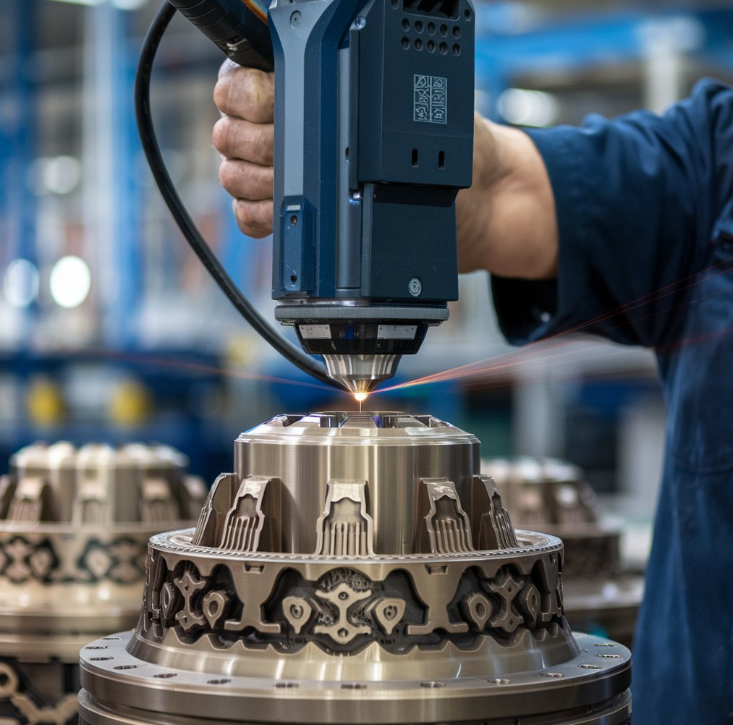In modern manufacturing, precision and efficiency are critical for maintaining product quality and meeting customer expectations. One technology that has revolutionized quality control is laser 3D scanning. This advanced method allows manufacturers to capture precise measurements and detect defects, ensuring that products meet stringent quality standards.
In this article, we’ll explore how laser 3D scanning improves quality control in manufacturing and why it’s becoming a key tool for industries worldwide.
What is Laser 3D Scanning?
Laser 3D scanning is a non-contact measurement technology that uses laser beams to capture detailed geometric data of objects. This data is then converted into a digital 3D model, which can be analyzed for accuracy, defects, and compliance with design specifications.
Key Benefits of Laser 3D Scanning in Quality Control
1. High Accuracy and Precision
Laser 3D scanning captures intricate details of an object with incredible accuracy, often down to microns. This precision ensures that even the smallest deviations from the design specifications are detected.
- Example: In aerospace manufacturing, laser scanning identifies minor inconsistencies in critical components, preventing potential failures.
2. Speed and Efficiency
Traditional quality control methods can be time-consuming, especially for complex geometries. Laser scanning streamlines the process by rapidly capturing detailed measurements.
- Why It Matters: Faster inspections mean reduced downtime and quicker identification of issues, leading to improved productivity.
3. Comprehensive Data Collection
Unlike manual measurements, which focus on specific points, laser scanning captures the entire surface of an object. This holistic approach provides a complete view of the product’s geometry.
- Benefit: Comprehensive data enables manufacturers to identify subtle defects that might be missed with traditional methods.
4. Easy Comparison with CAD Models
Laser 3D scanners can overlay scanned data with the original CAD (Computer-Aided Design) models. Any discrepancies are highlighted, making it easy to spot deviations from design intent.
- Use Case: Automotive manufacturers use this feature to ensure parts fit together seamlessly during assembly.
5. Non-Contact and Non-Destructive
Since laser scanning doesn’t require physical contact, it’s ideal for inspecting delicate or soft materials that could be damaged by traditional measurement tools.
- Example: Medical device manufacturers rely on non-contact scanning to inspect intricate components without causing damage.
6. Early Defect Detection
Laser 3D scanning enables manufacturers to identify defects early in the production process. By addressing issues at the source, companies can reduce waste and avoid costly rework or recalls.
- Why It’s Important: Early detection ensures products meet quality standards before reaching the market, protecting brand reputation.
Applications of Laser 3D Scanning in Manufacturing
1. Dimensional Inspection
Laser scanners are used to verify that products meet dimensional specifications, ensuring consistency across production runs.
2. Reverse Engineering
Manufacturers can use 3D scanning to create accurate digital models of existing parts for redesign or replication.
3. Tool and Mold Inspection
Laser scanning ensures that tools and molds used in manufacturing are free from wear and deformities, maintaining product quality.
4. Assembly Analysis
In complex assemblies, laser scanning checks for proper alignment and fit, reducing errors in final products.
Challenges and Solutions in Implementing Laser 3D Scanning
Cost of Equipment
High-quality laser scanners can be expensive. However, the return on investment (ROI) is significant due to improved efficiency and reduced waste.
Skill Requirements
Operating and analyzing laser scanning data requires trained personnel. Investing in staff training ensures optimal use of the technology.
Conclusion
Laser 3D scanning has transformed quality control in manufacturing by providing unmatched accuracy, efficiency, and comprehensive data. From early defect detection to seamless CAD model comparisons, this technology empowers manufacturers to uphold the highest quality standards.
As industries continue to adopt advanced technologies, laser 3D scanning stands out as a vital tool for improving manufacturing processes, reducing waste, and delivering exceptional products to market. Embracing this innovation is not just a step forward; it’s a leap toward a smarter, more efficient future.


